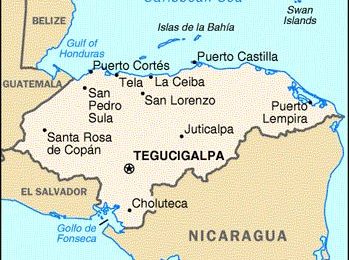
Ask Historyguy.com: What Was the So-Called Soccer War?
Ask Historyguy.com is a recent feature where we take questions from you, the reader/visitor to our website, and turn our answers into (hopefully) interesting post articles for all of our readers to enjoy. Have a question? Send it to historyguy.email@gmail.com
Dear Historyguy: Supposedly a war was started in 1969 over a disputed call in a soccer match. What two nations were party to that little bit of foolishness?
El Salvador and Honduras fought in July of 1969. Bad feelings had run between them for some time, largely due to the fact that hundreds of thousands of Salvadorans illegally “squatted” on Honduran land and complained of persecution from the Hondurans. The soccer games (three games in a qualifying round for the 1970 World Cup) only set the torch to an already flammable situation. One game was held in each national capital, with the third came played at a neutral venue, in Mexico City. Each game produced rioting by fans and the type of fan violence often associated with the sport. However, this soccer (or football-as it is called in most of the world) fan violence had roots in a long-standing dislike between these two nations.
While the soccer matches provided fuel for public passions, the Salvadoran invasion of Honduras really has more to do with the harassment and eviction of the Salvadoran squatters by the Honduran military.
El Salvador and Honduras are neighbors, but Honduras has five times the amount of land compared to El Salvador, but a significantly smaller population. In 1969, Honduras had about 2.6 million people, while El Salvador had 3.7 million people, in a much smaller geographical area. As with most Latin American nations at that time, both nations were economically poor, but for many Salvadorans, Honduras offered greater economic opportunities. While most land in El Salvador was owned by a very small number of rich families (i.e. the Oligarchy that controlled the nation), there was a lot of uninhabited land in Honduras that illegal Salvadoran immigrants could settle on. This migration was also aided and abetted by two large American companies, United Fruit and its rival, Standard Fruit, who needed more workers for their plantations, and imported Salvadorans. By the late 1960s, Honduras was home to about 300,000 illegal and unwanted Salvadorans. Honduras initiated land “reforms” that benefited rich landowners at the expense of the Salvadoran squatters. This forced many of the Salvadorans in Honduras to lose their livelihood.
The displaced refugees placed an economic strain on and already overpopulated El Salvador and the government had to “do something” to look governmental. So, supposedly to defend national honor ( and to allow their people to return to the land they were forced to leave) El Salvador invaded Honduras on July 14, 1969.
The more powerful Salvadoran army pushed into Honduras, and carried out airstrikes against Honduran cities. Honduras responded with their own airstrikes, which destroyed El Salvador’s oil storage facilities. An interesting fact about this air war, was that, due to an arms embargo put on both nations by the United States, both Honduras and El Salvador had to purchase war planes from private sources, and what they purchased were mostly World War Two-era Mustangs and Corsairs. The 1969 Soccer War was the last known war where piston-engine fighter planes battled against each other.
While their planes were of similar vintage, the Honduran pilots proved to be better, clearing the skies of their opponents, which gave them control of the air, and facilitated their attacks on El Salvador’s infrastructure and the Salvadoran invasion force.
Losing the oil and command of the air, the Salvadoran army pretty much ground to a halt. A cease-fire was arranged on July 18 and the armies stopped fighting. Over 100,000 Salvadorans were expelled from Honduras and 2,000 people, mostly Honduran civilians from the border region engulfed in the fighting, died.
While the ceasefire was put in place and the Salvadoran military withdrew from Honduras on by August 2, 1969, a final peace treaty ending the conflict took a lot longer, finally signed on October 30, 1980.
By the way, in most of world, in particular the Spanish-speaking world, this war is called the “Futbol War,” since most of the world calls the game Football.
Sources:
Moments in U.S. Diplomatic History: The 1969 ‘Soccer War’ Between Honduras and El Salvador
